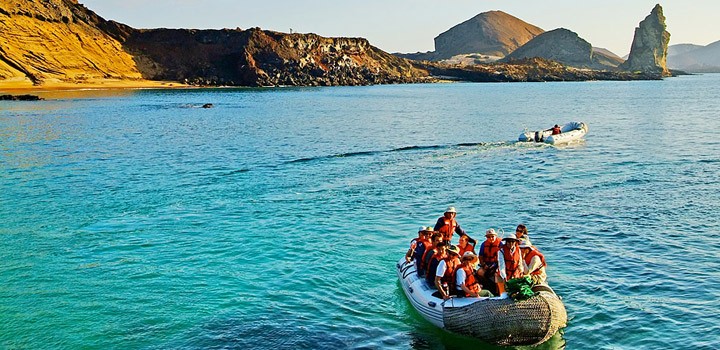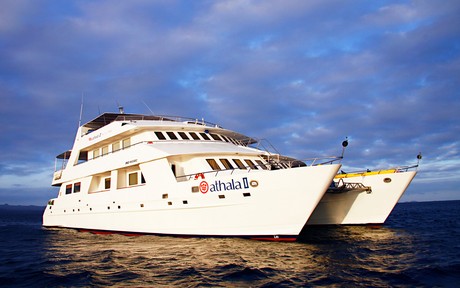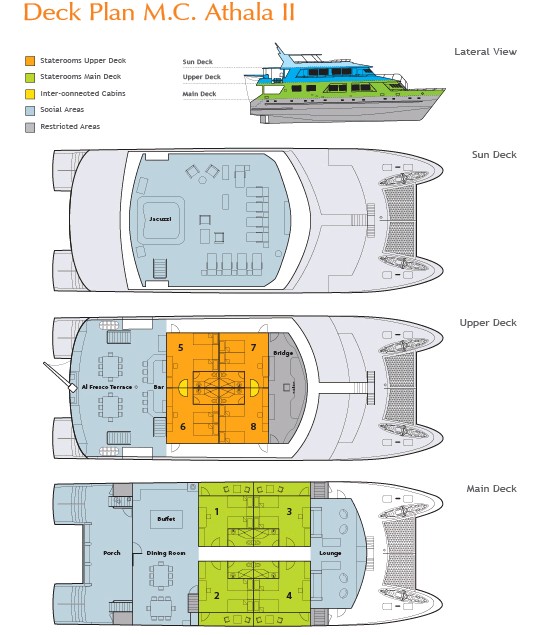
From your comfortable base aboard the Athala, you will be able to visit some of the most sought after visitor sites. There are many opportunities to hike, swim, snorkel, bird-watch and take great close-up photographs of the flora and fauna. On the islands you will follow trails, walking at a leisurely pace while your guide talks about the unusual sights and sounds that surround you. Afterwards, there is often an opportunity to swim and snorkel before returning to the comforts of the MC Athala II
Kayaking: According to National Park regulations, kayaking is only permitted at certain sites. Kayaking takes place before or after island excursions and is one of the greatest ways to enjoy the Galapagos ecosystem.
Lectures and briefings: The expedition leader and the guides will give nightly lectures about the islands, in addition to briefings on the next day’s activities.
Snorkeling
Most of the snorkeling activities take place before or after island excursions, so that you will not miss the hikes. It is an optional activity while the rest of the passengers stay on board or on the beach.
Crossing the Equator
We provide an Equatorial Certificate to each of our guests that certifies they have crossed the equator. This is only available on the North Western Genovesa itinerary.
Whale watching: Although sightings are not guaranteed, with a keen eye and some luck you may see some whales during your cruise, especially between June and September.
Additional charges include:
Flights to and from the islands
Fuel Surcharge - from US$200 pp
National Park Entrance Fee
Tourist Transit Card
Alcoholic Beverages
During peak season Easter (March 28 - April 04), Christmas (December 19 - 26) and New Year (December 26 - January 02) a surcharge of $400.00 per person apply
there is a colony of sea lions and a pelican nesting site. The trail leads to a salt water lagoon
where shore birds can be seen.
There are no future departures for this trip at this stage.
Athala II

For those looking for a Galapagos adventure cruise in style, the 16-passenger Athala II provides a cozy small yacht atmosphere, comfortable accommodations, personalized service, a dedicated cruise director, and more; in order to offer the best service.
This Motor Catamaran was specifically designed and built to cruise the Islands providing comfort and excellent stability for those looking for a Galapagos adventure cruise in style.
The Athala II offers spacious and comfortable, fully-air conditioned accommodations and personalized attention. This beautiful catamaran is equipped with 8 double staterooms of which 4 have private balconies and are located on the main deck and 4 located on the upper deck; all the staterooms offer large picture windows and either queen or twin bed configurations.
The Athala II's upper deck features a bar and a beautiful open area for relaxation and al fresco dining. The sundeck is great for whale and dolphin watching or to simply relax in the Jacuzzi. The dining area can be found on the main deck, along with a really comfortable lounge. All meals are served as a buffet style with all soft drinks included.


